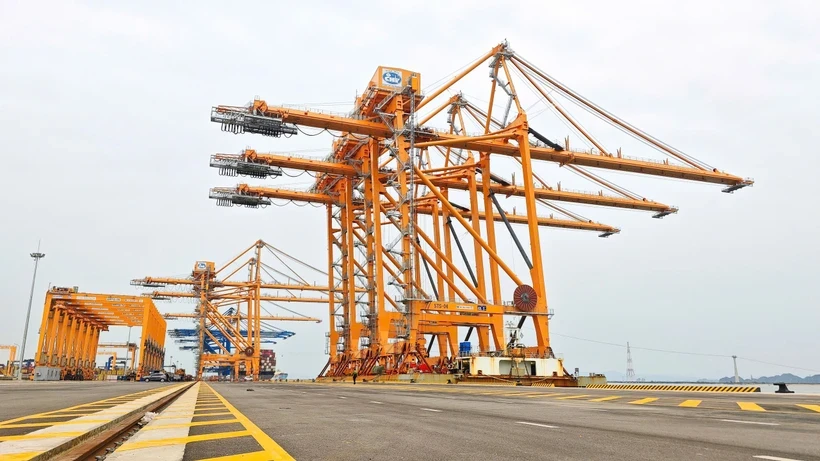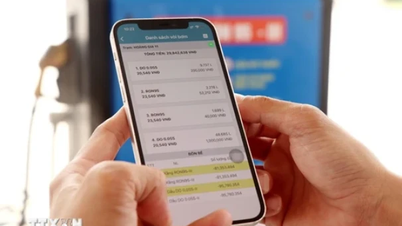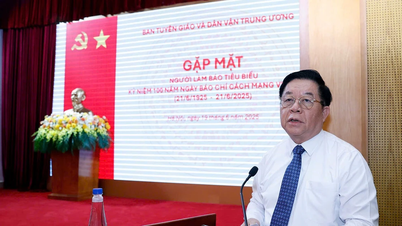The Ministry of Industry and Trade recommends that businesses need to update the situation to coordinate with import or export partners, and at the same time, be more careful in signing contracts related to transportation and logistics.

Faced with many fluctuations in the global economy and trade, especially the tension between Israel and Iran, at a regular press conference held by the Ministry of Industry and Trade on the afternoon of June 19, a representative of the Import-Export Department recommended a number of solutions to limit risks in freight rates as well as import and export.
According to Mr. Tran Thanh Hai, Deputy Director of the Import-Export Department, since April 2, the United States announced the imposition of reciprocal tariffs on a number of countries, but on April 9, a decision was made to temporarily suspend the application for 90 days. This allows countries, including Vietnam, to continue to maintain exports at the old tax rate during the suspension period.
As for China, the highest tariff rate proposed by the United States was 145%. However, after the May 12 agreement, this tariff rate was reduced to 30%. This rapid change created a strong “vortex” of exports from China to the United States, as businesses took advantage of the period of deep tax reduction.
The leader of the Import-Export Department assessed that China's increased exports have led to a high concentration of goods, ships and containers in this area, causing sea freight rates to increase sharply.
“A similar situation occurred during the COVID-19 pandemic. This phenomenon is happening, especially on the route from Asia to the US West Coast. Specifically, the shipping cost of a 40-foot container from Asia to the US West Coast, which used to fluctuate around 2,500-3,000 USD, can now increase to 4,000 USD or more,” said Mr. Hai.

In addition, local container shortages have also begun to appear, not only in China or Vietnam but also in other countries in the region such as Indonesia, Thailand and Malaysia. However, according to the assessment of the Ministry of Industry and Trade and the Vietnam Maritime and Inland Waterways Administration, the container shortage in Vietnam is not widespread. Some places have recorded difficulties but not as serious as during the peak of the COVID-19 pandemic.
In addition, the geopolitical situation in the Middle East, especially the tension between Israel and Iran, is also affecting international shipping activities. According to the head of the Import-Export Department, this area includes many strategic straits and shipping routes such as the Strait of Hormuz and the Suez Canal. In case the transport ships have to avoid this area and go around Africa, the shipping costs will continue to increase, affecting the cost of exporting to Europe and the East Coast of the United States.
Faced with these fluctuations, the representative of the Import-Export Department recommends that businesses need to update the situation to coordinate with import or export partners, and at the same time, need to be more careful in signing contracts related to transportation, logistics and delivery of goods to limit risks, especially in the context of unusual situations such as delayed ships or being affected by conflicts.
“Businesses should also consider alternative transportation options. In particular, the intermodal rail route to Europe is still available and is a potential solution. On the part of state management agencies, the Ministry of Industry and Trade, the Ministry of Construction, and the Ministry of Finance are closely monitoring developments in the logistics market to provide timely recommendations and support to businesses,” Mr. Tran Thanh Hai emphasized.
Import-export strategy is implemented effectively
Regarding the implementation of the Import-Export Strategy for the 2021-2030 period, Mr. Tran Thanh Hai said that although only halfway through, current indicators all show positive results, from turnover to growth rate, market expansion and export product groups.
However, the strategy also revealed some points that need improvement. First of all, there is an imbalance between exports and imports in some key markets. For example, Vietnam has a large trade deficit with China, while it has a large trade surplus with the US and EU markets.
“Maintaining a reasonable and balanced trade balance is a factor that needs to be focused on in the coming time,” the Deputy Director of the Import-Export Department emphasized. In addition, it is necessary to increase the value-added content of Vietnam's export products. This not only helps increase product value but also facilitates transparency and meets the requirements of international markets regarding traceability and quality standards.

Mr. Tran Thanh Hai affirmed that the Ministry of Industry and Trade will continue to monitor and review the implementation of the Import-Export Strategy for the period 2021-2030. If necessary, the Ministry will report to the Prime Minister for appropriate adjustments to the actual context and market trends.
Providing more information on this issue, Deputy Minister of Industry and Trade Nguyen Sinh Nhat Tan said that according to regulations, every five years a review of the strategy implementation must be organized. Currently, the Ministry of Industry and Trade has assigned the Import-Export Department to conduct a comprehensive review and assessment to determine whether any content needs to be adjusted or supplemented. If so, the Ministry will seek opinions from relevant agencies to propose timely adjustments./.
Source: https://baolangson.vn/bo-cong-thuong-cang-thang-o-trung-dong-tac-dong-den-xuat-nhap-khau-5050616.html




































































































Comment (0)